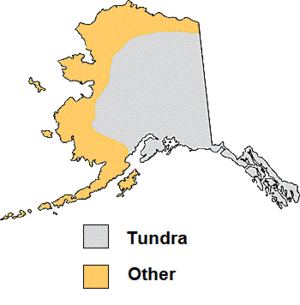It’s amazing how beavers can stroll blithely along the countryside, nibbling things and minding their own business and suddenly make an otherwise perfectly sane institution lose its frickin’ mind. I mean suddenly all the normally important distinctions between cause and effect go RIGHT out the window, and researchers are left with gibberish.
Case in point? This mornings NYT
Beavers Emerge as Agents of Arctic Destruction
 Even as climate change shrinks some populations of arctic animals like polar bears and caribou, beavers may be taking advantage of warming temperatures to expand their range. But as the beavers head north, their very presence may worsen the effects of climate change.
Even as climate change shrinks some populations of arctic animals like polar bears and caribou, beavers may be taking advantage of warming temperatures to expand their range. But as the beavers head north, their very presence may worsen the effects of climate change.
The issue isn’t just that the beavers are moving into a new environment — it’s that they’re gentrifying it.
Take the dams they build on rivers and streams to slow the flow of water and create the pools in which they construct their dens. In other habitats, where the dams help filter pollutants from water and mitigate the effects of droughts and floods, they are generally seen as a net benefit. But in the tundra, the vast treeless region in the Far North, beaver behavior creates new water channels that can thaw the permanently frozen ground, or permafrost.
“When you start flooding areas with permafrost you immediately trigger permafrost degradation,” said Ken Tape, an assistant professor at the University of Alaska in Fairbanks who has researched the beavers. “You start thawing the frozen ground that’s holding the soil together, and that water and soil and other things are washed away.”
What remains is a pitted landscape, with boggy depressions, that directs warmer water onto the permafrost, leading to further thawing. As permafrost thaws it releases carbon dioxide and methane, which in turn contributes to global warming and helps increase the speed that the Arctic, which is already warming faster than the rest of the planet, defrosts. Worldwide, permafrost is estimated to contain twice as much carbon as is currently in the atmosphere.
Oh sure. It’s the beavers. Blame them for this melting permafrost and our collapsing polar bears. Because it surely can’t be our fault for destroying the planet with carbon and passing a tax bill that allows drilling in ANWAR yesterday.
Hey, wait a minute. Where is ANWAR anyway?


Gosh’ I bet it’s harder to drive all those rigging trucks across marshy unfrozen land, You better kill all the beavers you see right away. And just to make sure you don’t catch any flack for it, say you’re doing it to prevent release of green house gasses See if you can make NYT do a story on it. They’ll saying anything bad about beavers.
Yeahhh….that’s the ticket.
A mere 4 months ago the alzheimer-plagued gray lady released a very helpful melting permafrost interactive. And beavers weren’t even to blame. Go figure.
Alaska’s permafrost, shown here in 2010, is no longer permanent. It is starting to thaw.
YUKON DELTA NATIONAL WILDLIFE REFUGE, Alaska — The Arctic is warming about twice as fast as other parts of the planet, and even here in sub-Arctic Alaska the rate of warming is high. Sea ice and wildlife habitat are disappearing; higher sea levels threaten coastal native villages.
But to the scientists from Woods Hole Research Center who have come here to study the effects of climate change, the most urgent is the fate of permafrost, the always-frozen ground that underlies much of the state.
Starting just a few feet below the surface and extending tens or even hundreds of feet down, it contains vast amounts of carbon in organic matter — plants that took carbon dioxide from the atmosphere centuries ago, died and froze before they could decompose. Worldwide, permafrost is thought to contain about twice as much carbon as is currently in the atmosphere.
That was then this is now, I guess. The story today did release some beautiful satellite maps showing the changes they were blaming on beavers. The maps start with 1950 and progress to 2012. It looks to me like an ad campaign promoting how valuable they are on the landscape.
But I’m told I’m quirky.

The moral of this story that the new york times missed? Here’s my takeaway. If you’re going to have climate change anyway (and we are) you are WAY BETTER OFF if you have it with beavers. Period.
“Beavers are these agents of disturbance that come from outside of the ecosystem and impose their construction, their activities on this landscape,” said Dr. Tape. “Probably the best analog for beavers in the Arctic are mankind.”







































